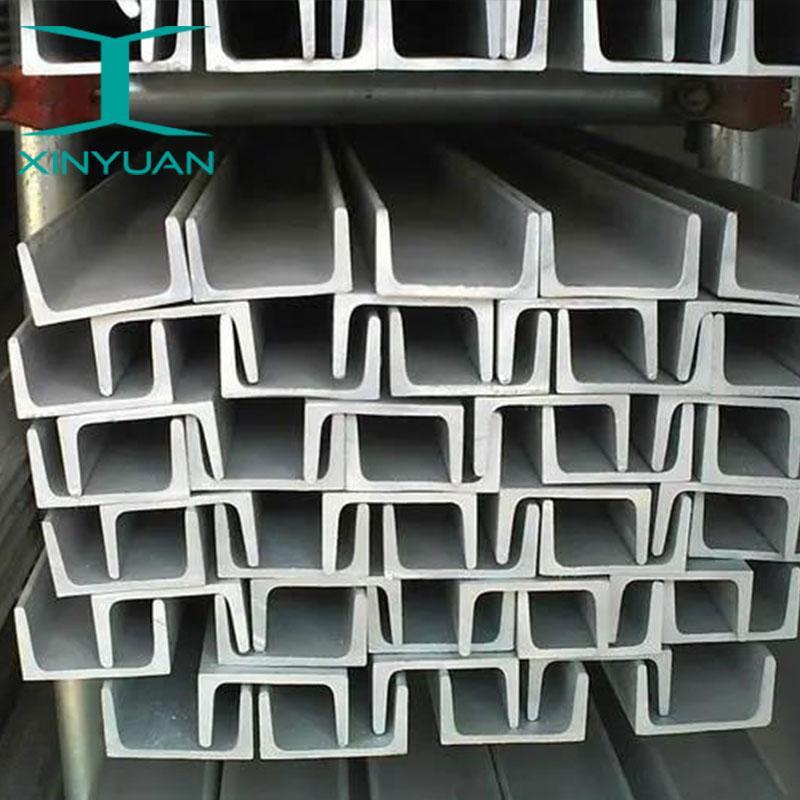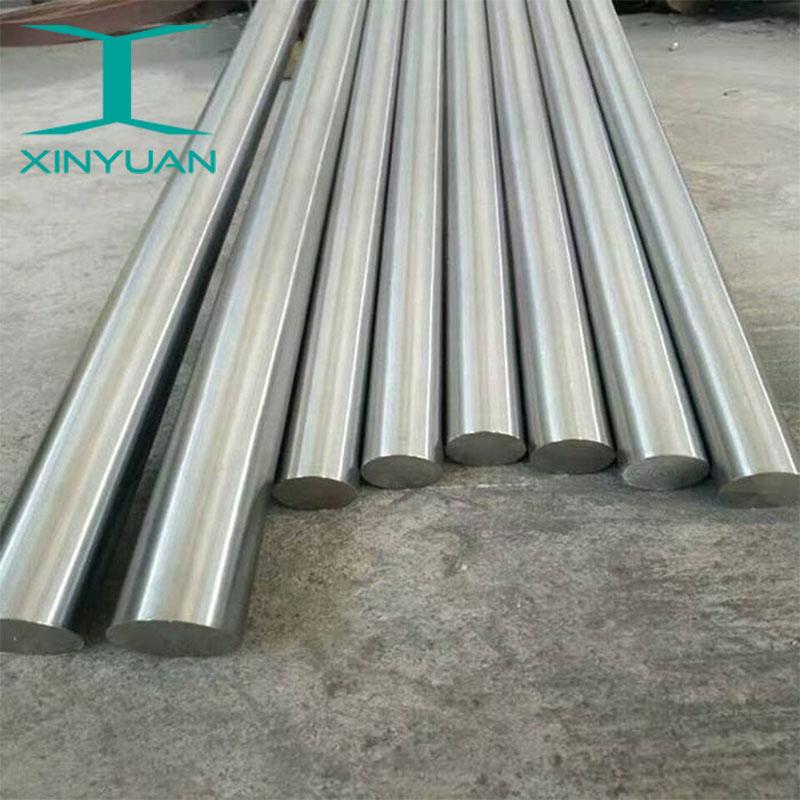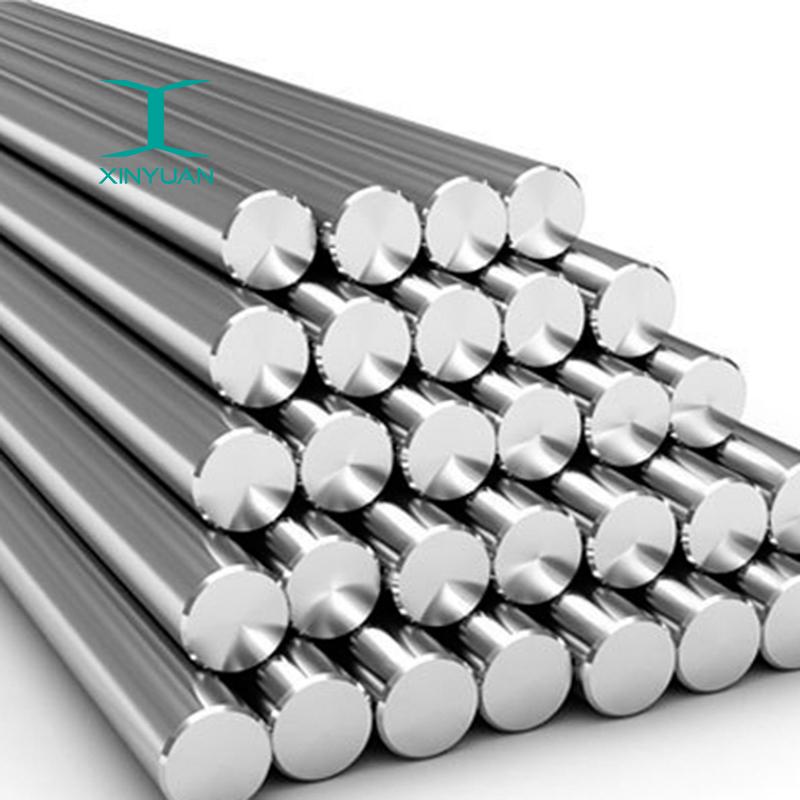254SMO is an austenitic stainless steel. Because of its high molybdenum content, it has very high resistance to spot corrosion and crevice corrosion. Main ingredients:254 smo carbon (C) 0.02 or less, manganese (Mn) of 1.00 or less, nickel (Ni) 17.5 ~ 18.5, silicon (Si) of 0.8 or less phosphorus (P) of 0.03 or less, sulfur (S) of 0.01 or less, chromium (Cr) 19.5 ~ 20.5, copper (Cu) 0.5 ~ 1.0, molybdenum (Mo) 6.0 ~ 6.5 National standards: UNS S31254, DIN/EN 1.4547, ASTM A280, ASME SA-240 Welding material: ERNiCrMo-3 wire, ENiCrMo-3 electrode Product Name254smo st
Contact Now
Stainless steel with 12%~30% chromium and ferritic matrix of body - centered cubic lattice at high temperature and room temperature. This kind of steel generally does not contain nickel, some contain a small amount of molybdenum, titanium or niobium and other elements, with good oxidation resistance, corrosion resistance and chloride corrosion cracking resistance.
Contact Now
ER316/316L is used for welding types 316 and 316L stainless steels. It has a maximum carbon content of .03% to reduce the possibility of formation of intergranular carbide precipitation. This low carbon alloy is not as strong as 316H at elevated temperatures.Typical Applications: primarily used for welding low carbon molybdenum bearing austenitic alloys AWS Class: ER316/316LCertification: AWS A5.9/A5.9M:2006Alloy: ER316/316LAWS/ASME SFA A5.9&nb
Contact Now
2507 (UNS S32750) duplex stainless steel has strong strength and corrosion resistance, which is mainly used in chemical processing, petrochemical industry and subsea equipment. It has strong chloride corrosion resistance, high thermal conductivity and low coefficient of thermal expansion. The high content of chromium, molybdenum and nitrogen makes it highly resistant to patchy, crevice and general corrosion.
Contact Now
Stainless Steel 316 FlangesStainless Steel 316 Flanges are made up of a chromium nickel molybdenum alloy that is used ordinarily in chloride ion corrosion inclined environments. The molybdenum addition makes the cloth corrosion resistant, in particular to the chloride wealthy conditions. There are excessive carbon and low carbon variations of the 316 cloth which is used primarily based on the welding want and longevity of the utility intended.
Contact Now
Grade 316 is also primarily composed of iron, and again contains significant amounts of nickel and chromium¡ª10-14% and 16-18%, respectively¡ªand small amounts of carbon, manganese, molybdenum, and silicon.
Contact Now
Inconel 625 tubeInconel 625 tube is a nickel-chromium-molybdenum stable answer reinforced alloy with a nominal chemical composition of 61% nickel, 22% chromium, and 9% molybdenum. Inconel 625 tube is regularly referred to through the tradename Inconel 625 and the everyday designation UNS N06625.
Contact Now
Alloy A286 features high strength, oxidation resistance, and corrosion resistance at continuously high temperatures. A286 alloys are heat treatable to achieve a wide variety of grain structures and tensile properties. This grade of A286 is annealed and aged. Applications for Alloy A286 include jet engine components, superchargers, turbine wheels and blades, fasteners, springs, and general high-stress components in petrochemical, aerospace, and oil patch industries.DetailsA286 is an iron-nickel-chromium alloy with additions of molybdenum and titanium.
Contact Now
Inconel 825 PipeInconel 825 Pipes are constructed from primary factors like iron, nickel, and chromium, which supply the primary resistance to rusting and pitting in ordinary temperatures. Inconel 825 Pipe has some introduced factors in small parts like molybdenum, titanium, and copper which provides greater substance to the product and will increase its workability even in marine conditions.
Contact Now
310 Stainless Steel Angles are manufactured using high-grade steel, which contains chromium, nickel, and additional molybdenum, niobium, titanium, and nitrogen. These additional elements offer excellent tensile strength, high surface finish, outstanding corrosion & oxidation resistance, and good mechanical properties.
Contact Now
317L hexagonal bar can be cold-drawn. For some demanding applications, 4% or more molybdenum in the welding coating of type 317 alloy hex bar is desirable.
Contact Now
UNS S32760 is able to compete strongly with the 6% molybdenum “super austenitic” grades in some applications, as it has fewer amounts of Mo and Ni which drive up the base cost of the material. Although, 32760 has lower amounts when compared to “6% Moly” grades it still has higher contents of Cr, Ni, and Mo when referring to other alloys, these elements improve the intergranular and pitting corrosion resistance of the material.
Contact Now
2507 Stainless Steel Pipe is a super duplex grade for which elements chromium, nickel and molybdenum are the primary alloyants.
Contact Now
The Duplex 2205 Stainless Steel Plate is 3% molybdenum, 22% chromium, 5-6% nickel alloyed stainless steel plate, with high-stress resistance characteristics, high strength, and excellent resistance to impact.Product ShowProducts DescriptionProduct Namestainless steel plateThickness0.1~150mmWidth600mm,1000mm,1219mm,1500mm,1800mm,2000mm,2500mm, 3000mm, 3500mm,etcLength2000mm, 2440mm, 3000mm, 5800mm, 6000mm, etcStandardASTM GB/T JIS4 ASME BS DIN ENMaterial 200 series: 201/202 300 series: 301/304/304L/305/309S/310S/316/316L/316LN/316Ti/317/317L/347/347H 400 series: 405/40
Contact Now
Duplex 2304 is a 23% chromium, 4% nickel, molybdenum-free duplex stainless steel whose structure is a balance of ferritic and austenitic.
Contact Now
316/316L Stainless Steel Angle BarStainless Steel Angle 316/316L is an angle shaped 316/316L Stainless Steel Alloy. 316 Stainless Steel Alloy is a standard molybdenum-bearing grade, the second most commonly sought after grade next to grade 304 amongst the austenitic stainless steels. The molybdenum gives 316 better overall corrosion resistant properties than Grade 304, particularly higher resistance in chloride environments.
Contact Now
Hastelloy plates are suitable for various chemical industries containing oxidizing and reducing media. The higher molybdenum and chromium content enables the alloy to resist chloride ion corrosion, and the tungsten element further improves corrosion resistance. At the same time C-276 Hastelloy tube is one of only a few materials resistant to corrosion by moist chlorine gas, hypochlorite and chlorine dioxide solutions?
Contact Now
Hastelloy C-4 Seamless PipeHastelloy C-4 alloy is a nickel-chromium-molybdenum alloy with outstanding high-temperature stability as evidenced by high ductility and corrosion resistance even after aging in the 1200 to 1900°F (649 to 1038°C) range. This alloy resists the formation of grain-boundary precipitates in the weld heat-affected zone, thus making it suitable for most chemical process applications in the as-welded condition.
Contact Now
Hastelloy C-2000, named UNS N06200, is a nickel-chromium-molybdenum alloy. Adding a certain amount of copper to sulfuric acid, hydrofluoric acid and dilute hydrochloric acid can improve its temperature resistance. The high chromium content enables maximum resistance to oxidation chemicals and process flows contaminated by iron ions and dissolved oxygen. The alloy has excellent resistance to chloride and corrosion.
Contact Now
316 Stainless Steel Square BarStainless Steel Square Bar 316/316L is a square shaped 316/316L Stainless Steel Alloy bar.316 Stainless Steel Alloy is a standard molybdenum-bearing grade, the second most commonly sought after grade next to grade 304 amongst the austenitic stainless steels.The molybdenum gives 316 better overall corrosion resistant properties than Grade 304, particularly higher resistance in chloride environments.Product ParameterProduct name:stainless steel square rodMaterial:200 300 400seriesGrade:201 2205 304 316 304L 304J1 316L 309s 310s 321 410s 430 etc.Standard:ASTM JIS AIS
Contact Now
Alloy B-2 is a nickel-molybdenum alloy with significant resistance to reducing environments, such as hydrogen chloride gas and sulphuric, acetic and phosphoric acids. Hastelloy® B-2 provides resistance to pure sulphuric acid and a number of non-oxidizing acids. The alloy should not be used in oxidizing media or where oxidizing contaminants are available in reducing media.
Contact Now
2304 Duplex Stainless Steel PlateDuplex 2304 is a 23% chromium, 4% nickel, molybdenum-free duplex stainless metal whose shape is a stability of ferritic and austenitic. It has common corrosion resistance comparable or higher than Alloys 304L and 316L however with yield energy almost double that of austenitic stainless steels.
Contact Now
2205 Duplex Stainless Steel PlateDuplex 2205 is a two-phase, ferritic, austenitic 22% chromium, 3% molybdenum, 5 to 6% nickel alloyed stainless steel. It is the most widely used duplex stainless steel grade and is characterized by high yield strength, double that of the standard austenitic stainless steel grades.
Contact Now
Hastelloy C-4 alloy is an austenitic low-carbon nickel-molybdenum-chromium alloy. The main difference between Nicrofer 6616 hMo and other early-developed alloys of similar chemical composition is the low carbon, silicon, iron, and tungsten content. Such a chemical composition makes it exhibit excellent stability at 650-1040°C, improves the ability to resist intergranular corrosion, and can avoid edge line corrosion sensitivity and weld heat-affected zone corrosion under appropriate manufacturing conditions.
Contact Now


































